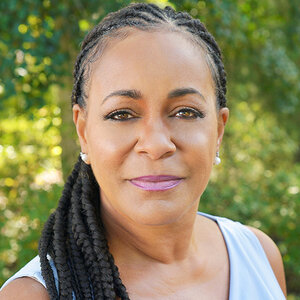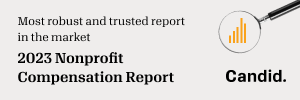Susan Taylor Batten, President and CEO, ABFE: Reaching the goal of proportional funding for HBCUs
May 23, 2023
Susan Taylor Batten is president and CEO of ABFE: A Philanthropic Partnership for Black Communities. Established in 1971 as the Association of Black Foundation Executives, ABFE is a membership-based organization that advocates for responsive and transformative investments in Black communities. Since joining ABFE in 2009, Batten has led the organization’s philanthropic advising and programming on responsive philanthropy in Black communities for foundation leaders, donors, and aligned partners.
Batten came to ABFE after more than 25 years of leadership experience in the private and public sectors. She served as senior associate with the Annie E. Casey Foundation and worked as a senior analyst for the U.S. Department of Agriculture. Batten serves on the boards of the Schott Foundation for Public Education, the Caribbean Philanthropy Alliance, Giving Gap, and the Association for Enterprise Opportunity, and is an adjunct lecturer at the Valdry Center for Philanthropy at Southern University.
Philanthropy News Digest spoke with Batten about Candid and ABFE’s report, Philanthropy and HBCUs: Foundation funding to historically Black colleges and universities, HBCUs’ impact on generational wealth, how to combat HBCU underfunding, the benefits of partnering with ABFE, the outlook of sustained philanthropic generosity, how governmental changes could affect DEI programs at HBCUs, and the role of mega-gifts and mega-donors.
Philanthropy News Digest: In the foreword of the report Philanthropy and HBCUs: Foundation funding to historically Black colleges and universities, you state that HBCUs are more than educational institutions; they are “anchor” institutions that are steeped in the history and lived experience of Black people. Could you elaborate more on that and their impact on Black students?
Susan Taylor Batten: HBCUs (historically Black colleges and universities) were and continue to be central to building and sustaining Black communities in the United States. HBCUs serve as a hub for academic rigor and cultural affirmation and continue to be the epicenter for movement building to support equity and justice. Many current-day movement leaders and former-day civil rights leaders received their education at an HBCU.
I refer to HBCUs as anchor institutions as they are economic engines in Black communities; they are employers and purchasers of goods and services. Many HBCUs have community development corporations (CDCs) that work on housing, workforce development, and entrepreneurship. Funders who are concerned about issues impacting educational outcomes and want to invest in neighborhood and community development should partner with an HBCU.
PND: You are an alum of two HBCUs, and I, too, am an alum of an HBCU and the daughter of two HBCU graduates. In that respect, I’d say that HBCUs are not only a mainstay but legacy-building institutions that impact generational wealth in Black communities. How do you see sustained support for HBCUs impacting the economy of Black communities?
STB: If HBCUs succeed, Black people succeed financially. There is a link between Black people with educational attainment and economic mobility, and HBCUs confer 13 percent of all bachelor’s degrees awarded to Black people. There is also data that suggest that the after college economic mobility rate for Black HBCU students is higher than for Black students attending a predominantly white institution (PWI). I love your reference to HBCUs’ role in generational wealth building; it’s these kinds of strategies that we need to focus on to address the racial wealth divide in this country. Investments in HBCU students have effects beyond the individual; they impact Black families, communities, and the nation. One HBCU staff member noted in our qualitative findings, “When you educate an African American student, oftentimes you are improving the living standard for that entire household. It lifts the entire household when you educate one student.…It becomes a domino effect when you empower and live within this community [that then] impacts the global community.” Leveraging HBCUs is a “no-brainer” on issues related to building economic power in Black communities.
[I]t’s these kinds of strategies that we need to focus on to address the racial wealth divide in this country. Investments in HBCU students have effects beyond the individual; they impact Black families, communities, and the nation.
PND: You’ve said in a blog post for ABFE that “there seems to be a lack of understanding or agreement that Black institutions are critical to the future of our community (you know the conversation, ‘do we really need HBCUs anymore?’).” When translated into philanthropic dollars for HBCUs, would you say that this misperception that HBCUs are no longer necessary is reflected in the lower levels of funding? How would you push back against that sentiment?
STB: This may be a small part of the problem, but overall, I think foundations fund HBCUs at lower levels because they don’t know enough about them. In some respects, what everyone says about foundations and philanthropy is true; foundations fund the people they know.
It is important to also lift up, as was raised in our qualitative work, the explicit or implicit/unconscious bias against HBCUs. Compared to similarly situated PWIs, HBCUs received proportionally less funding because HBCUs are not even considered for funding. They are functionally left out of the funding conversations because of the systemic racism inherent in philanthropy.
PND: As reported in Philanthropy and HBCUs, HBCU endowments lag behind non-HBCU institutions by at least 70 percent. In your experience addressing racial disparities in grantmaking, what do you believe is the cause of the underfunding, and what efforts should philanthropy make to close those gaps?
STB: I do believe the lack of relationships and proximity between HBCUs and philanthropy is a major cause, as well as explicit and implicit racial biases of funders. Underfunding has consequences, including HBCUs’ lean and fragile fundraising apparatus.
Foundations can strengthen endowment building by directly funding endowments at HBCUs and funding the capacity and infrastructure HBCUs require to cultivate sustained giving by alums.
PND: In the latest data from Candid and ABFE, big foundations for most of the last 20 years have overlooked HBCU funding. Lack of trust, limited cultivation of relationships, and misperceptions are reported as the biggest reasons funding has been sparse. Are there ways in which HBCUs can overcome these barriers, and what shifts should big foundations make to prioritize HBCU funding in conjunction with their higher education funding for PWIs?
STB: I would like to see more intentional organizing amongst big funders generally and big education funders specifically on deepening connections with these legacy institutions. This is no different from our calls that philanthropy do more to connect with Black-led institutions of all kinds. ABFE is certainly willing to help make these connections. Big philanthropies can help address disparities in giving—they have the capacity, and I want to believe they have the will. However, it will take a level of intentionality.
I would like to see more intentional organizing amongst big funders generally and big education funders specifically on deepening connections with these legacy institutions. This is no different from our calls that philanthropy do more to connect with Black-led institutions of all kinds.
PND: How do partnerships with organizations like ABFE benefit HBCUs and funders looking to invest more in these institutions? After listening to those most experienced in the needs of HBCUs, where should big foundations start?
STB: ABFE’s role as a membership organization in the philanthropic sector is to catalyze a movement of grantmaking entities, donors, and nonprofit organizations to improve outcomes for Black communities and the country as a whole. In addition to our research and advocacy work, as evidenced in this report, ABFE also specializes in philanthropic advising, where we help foundations establish equitable funding practices. Our framework, Responsive Philanthropy in Black Communities lays out defining characteristics of equitable grantmaking that foundations can use to right-size their grantmaking to HBCUs and other Black-led organizations.
Foundations can immediately take action to examine their grantmaking data and look for HBCU opportunities within their portfolios, make a general operating support grant and/or a capacity-building grant to an HBCU within their community. While taking these steps, it is important that foundations fund HBCUs consistently and build relationships with HBCUs.
PND: For those HBCUs that are not considered among the “Black Ivies” (Fisk University, Morehouse College, Spelman College, Howard University, and Clark Atlanta University), which tend to draw more philanthropic dollars than others, though not comparable to PWI Ivy League institutions, how do they reach donors and begin to build relationships that could spur sustained giving?
STB: To note the 10 colleges that received the most philanthropic dollars, according to our report, are Johnson C. Smith University, Spelman College, Morehouse College, Morehouse School of Medicine, Howard University, Morgan State University, North Carolina A&T, Clark Atlanta University, Texas Southern University, and Xavier University of Louisiana.
The work is not on HBCUs to right the disproportionate funding challenge. The work is on the foundations to build strategies to increase the number of HBCUs within their funding network. If foundations do not have the skillset to build an inclusive funding strategy, these foundations can reach out to ABFE. Our philanthropic advising team provides consulting and coaching services to help foundations implement equitable and just funding practices.
The work is not on HBCUs to right the disproportionate funding challenge. The work is on the foundations to build strategies to increase the number of HBCUs within their funding network.
PND: The murder of George Floyd in 2020 was a flashpoint in our society and brought racial justice even more into focus for funders looking to mitigate injustices, and funding for HBCUs increased. However, questions remain about the future of funding for racial justice, most importantly, sustained funding for HBCUs. How should HBCUs prepare for a possible downturn in philanthropic generosity?
STB: HBCUs have never depended on the generosity of organized philanthropy to sustain their institutions. This is obvious when we look at the funding to HBCUs compared to similarly situated PWIs and, of course, comparing HBCUs’ receipt of funding to that of Ivy League colleges.
Keeping in mind that what we know about the increase of philanthropic dollars to HBCUs is at this point somewhat anecdotal because the fact-based data is not yet in, nevertheless, funneling the assumed increased funding to endowments, improving fundraising and another infrastructure capacity (including alumni giving) and completing needed facilities upgrades, are all ways to prepare for a possible scaling back of the perceived surge in funding to HBCUs after the murder of George Floyd.
HBCU staff are concerned about the potential withdrawal of support and are seriously thinking about not putting all of their “eggs in the foundation basket.”
PND: It has been reported that Florida governor Ron DeSantis and fellow Republicans in the Florida House of Representatives “gave final approval to a bill that includes preventing colleges and universities from spending state money on diversity, equity, and inclusion initiatives.” Florida A&M University is a public HBCU that spends the most per student on diversity, equity, and inclusion of any public state university in Florida, as the Tampa Bay Times reports. What impact can you foresee from this decision if other states follow suit? Would philanthropy step in to fill the gap?
STB: This is much broader than what is going on in Florida, considering that we expect to hear from the Supreme Court this summer on the challenges to affirmative action in college admissions. We are now seeing foundations and other organizations forced to respond to attacks from “right-leaning” individuals and organizations by shifting their funding strategies or what they publicly say about their work.
ABFE is in the process of strategizing with foundations, civil rights attorneys, nonprofit attorneys, other advocacy organizations, and our members to support organizations that explicitly advocate for and provide services to people of color and other identity groups because we know that the college admission ruling will have a ripple effect on the organizations led for and by people of color.
PND: While mega-gifts are important to the HBCU funding landscape, which has been on the rise in the wake of the murder of George Floyd, giving to HBCUs and Black-led causes isn’t new. As discussed in PND’s exclusive “Black philanthropy: Overcoming the wealth gap to build on a legacy of giving,” the Black community has donated to educational institutions for generations. Still, large funders don’t always consider alumni givers as “philanthropists,” and this giving isn’t always categorized as philanthropy, and Candid and ABFE’s report highlights the great variability in HBCU funding streams. How can the philanthropic sector dismantle these outdated views about giving in efforts to convey the impact of donating, large and small, that can make a difference?
STB: Alumni giving is a vital and noted philanthropic stream to colleges and universities. HBCUs understand the importance of this, and they seek funding from foundations to increase their capacity within their institutional advancement divisions to reach out to alums to grow and sustain giving. We did not include alumni giving in this report because we wanted to focus more on foundation giving, not because we think there is no value in donors with smaller amounts of money to contribute.
The media tends to focus on large gifts made by prominent donors and has contributed to dominant models of thinking about who is a philanthropist. However, HBCUs, other colleges and universities, and the general nonprofit sector value and understand alumni and other individual donors’ contributions to their organizations and the nonprofit sector, regardless of size.
PND: Among wealthy individual givers, MacKenzie Scott’s giving has been diverse, inclusive, and transformational, especially regarding donations to HBCUs and Indigenous higher education. What aspects could other donors learn from this giving model and replicate?
STB: To give money without restrictions to these colleges and universities. Give general operating support and make multiyear grants. Trust that they know what they are doing.
PND: Would you say that the Philanthropy and HBCUs report can be likened to a disparity study that HBCUs can use to garner more philanthropic support? What do you envision?
STB: Our ultimate goal is that the foundation community responds by funding HBCUs at least proportionately compared to their funding of similarly situated PWIs. In the process of reaching that goal of proportional funding, we want foundations to examine their grantmaking practices with a racial equity and racial justice lens and remove the structural and systemic barriers in their grantmaking practices that result in disproportionate lower funding to Black-led organizations, including HBCUs in comparison to white-led organizations and PWIs.
What I would like to see, however, is foundations making long-term funding commitments to HBCUs and, most importantly, funding to HBCUs endowments.
Lauren Brathwaite is content editor at Philanthropy News Digest.







Philanthropy, Diversity, and Equity